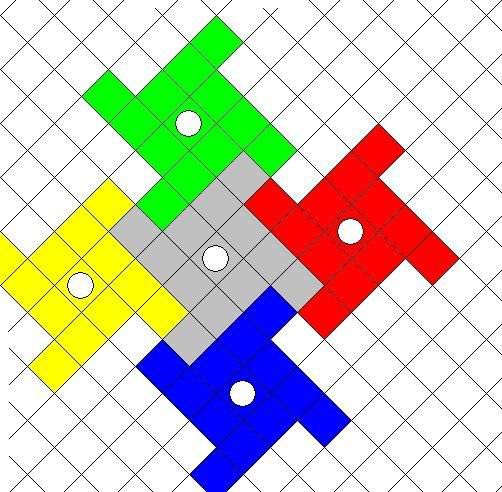Pyrrhos
Vae Victis
- Joined
- Mar 15, 2007
- Messages
- 712
Exactly, Tone. Yet I and everyone else that do not swear fealty to "Tight, usually CXXC" get the opposite showed down our throats all the time:
"CXXC will have twice the number of towns and twice the number of citizens" or the variant "The CXXXXC player will only get half the number of towns" or the variant "Play CXXXXC and you will be AI-meat".
All these assumptions are non-arguments because they build on false premises:
False premise #1) No matter which pattern you use; OCP, loose, tight or ICS, AI expansion will ensure that you end up with the same size territory.
(Therefore - Within that territory CXXC gives you twice the number of towns, twice the number of citizens, twice the overall production etc. Conclusion CXXC is superior.)
False premise #2) Because CXXC uses every tile and CXXXXC leaves many unused, CXXC has twice the productivity and produces twice as many settlers and as these settlers have fewer tiles to walk, settle the map much faster, thus negating any advantage CXXXXC might have.
(Therefore - CXXC gives you the same territory as CXXXXC which means twice the number of towns, twice the number of citizens, twice the overall production etc. Conclusion CXXC is superior.)
False premise #3) Every successful player as measured by placement in the HoF or GoTM use CXXC, therefore CXXC is the only way to go and anyone who says different a stuborn, inflexible idiot who refuses to accept fact
Tone, I have proven that under the same conditions CXXXXC is vastly superior to strict CXXC. Another pattern has been presented as CXXC, one that actually is CXXXC according to Ginger Ale's definitions. I have investigated that pattern and found it marginally better than CXXXXC - and said so! Yet there are children such as "TheOverseer" who will never accept that they or their opinions could be wrong and see it as their sacred duty to religiously defend CXXC and persecute other opinions.
On my part, I will accept one fault - I do not suffer fools gladly but there's one thing I find even worse than a fool and that is a pompous, agressive fool such as The Overseer.
"CXXC will have twice the number of towns and twice the number of citizens" or the variant "The CXXXXC player will only get half the number of towns" or the variant "Play CXXXXC and you will be AI-meat".
All these assumptions are non-arguments because they build on false premises:
False premise #1) No matter which pattern you use; OCP, loose, tight or ICS, AI expansion will ensure that you end up with the same size territory.
(Therefore - Within that territory CXXC gives you twice the number of towns, twice the number of citizens, twice the overall production etc. Conclusion CXXC is superior.)
False premise #2) Because CXXC uses every tile and CXXXXC leaves many unused, CXXC has twice the productivity and produces twice as many settlers and as these settlers have fewer tiles to walk, settle the map much faster, thus negating any advantage CXXXXC might have.
(Therefore - CXXC gives you the same territory as CXXXXC which means twice the number of towns, twice the number of citizens, twice the overall production etc. Conclusion CXXC is superior.)
False premise #3) Every successful player as measured by placement in the HoF or GoTM use CXXC, therefore CXXC is the only way to go and anyone who says different a stuborn, inflexible idiot who refuses to accept fact
Tone, I have proven that under the same conditions CXXXXC is vastly superior to strict CXXC. Another pattern has been presented as CXXC, one that actually is CXXXC according to Ginger Ale's definitions. I have investigated that pattern and found it marginally better than CXXXXC - and said so! Yet there are children such as "TheOverseer" who will never accept that they or their opinions could be wrong and see it as their sacred duty to religiously defend CXXC and persecute other opinions.
On my part, I will accept one fault - I do not suffer fools gladly but there's one thing I find even worse than a fool and that is a pompous, agressive fool such as The Overseer.





